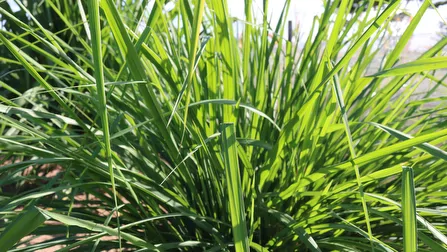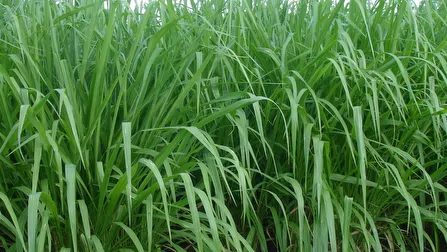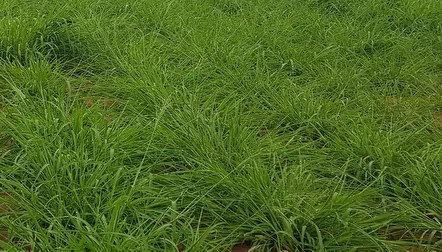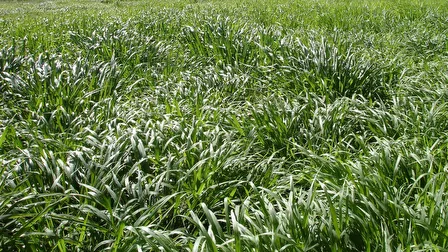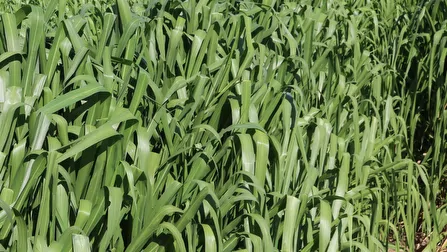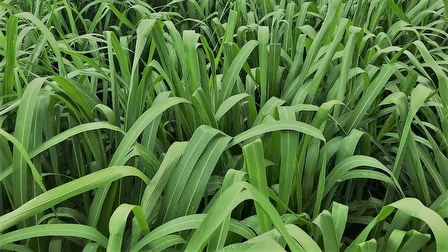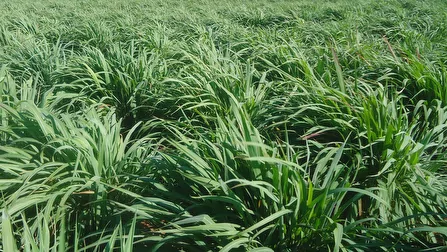
Indicação
É uma forrageira indicada para solos de média a baixa fertilidade, ácidos, rasos e também com cascalho. Recomendado para bovinos nas fases de cria, recria e engorda, e também para equinos, ovinos e caprinos em regiões de clima mais áridos. É resistente às cigarrinha-das-pastagens.
Andropogon gayanus cv. Planaltina
Baixa a média fertilidade, solos rasos, ácidos e cascalhado
Pastejo direto ou fenação
8 a 14 t/ha/ano de matéria seca (M.S.)
6 a 9%
1,30m a 1,80m
Boa
Boa
Alta
Possui resistência física (pêlos)
Média
Perene
Origem
Originário do Zimbabwe (antiga Rodésia) é encontrado como vegetação espontânea na Costa do Ouro e Nigéria. Esta variedade foi introduzida em toda América do Sul. Foi lançada comercialmente em 1980 pela Embrapa CNPC.
Características Agronômicas
É uma espécie forrageira que tolera solos ácidos, locais com precipitações acima de 700 mm, rebrota mesmo após a queimada.
Utilização e Manejo
O Andropogon é uma pastagem indicada para regiões com climas mais seco, solos arenosos, de baixa fertilidade, rasos ou com presença de cascalho. Tem boa aceitabilidade por bovinos, equinos, ovinos e caprinos. Possui resistência física às cigarrinha-das-pastagens. No plantio, é recomendado que as sementes sejam obrigatoriamente incorporadas a 0,5 - 1 cm de profundidade. Deve-se evitar que as plantas amadureçam e percam suas qualidades nutricionais, por estarem lignificadas e fibrosas, afetando inclusive a ingestão pelos animais. A entrada de pastejo deve ocorrer quando as plantas atingirem 50 cm, e a saída na altura de 18 a 20 cm do solo.
Características Morfológicas
Planta perene, cespitosa, com nós e pedicelos ciliados em ambas as faces; pedicelos com espiguetas pilosas e vilosas; calo com franja densa de pêlos, frontais e laterais; arista com 2 a 3 cm de comprimento. Apresenta características morfológicas e anatômicas quase que inteiramente panicóides, entretanto o embrião possui características festucóides, com um epiblasto e ausência de uma fenda escutelar.
